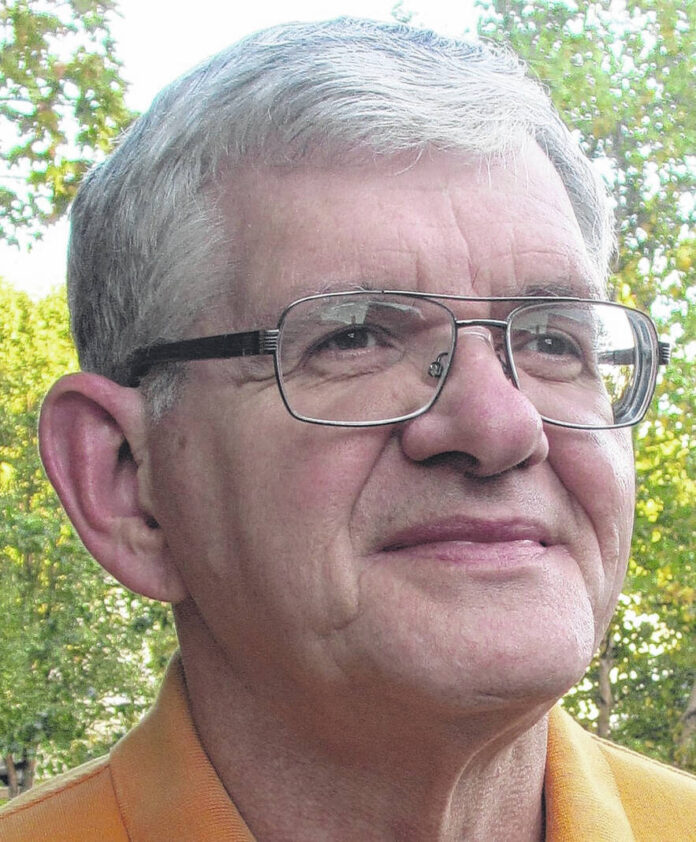When it comes to fixing a conceived problem, people normally want a quick fix. When the concern deals with Mother Nature, a solution rarely happens fast.
Thus, the weed woes continue on Indian Lake.
I have to chuckle when I see comments on different Facebook sites concerning the lake. There are a number of amateur biologists, engineers and problem solvers out there. However, this is no laughing matter.
Some absolutely abhor the weed situation in the lake. One calls the lake Everglades North. Others like the growth and have pictures of dandy bluegill, crappie, yellow perch and saugeye catches to prove it. And still others are taking a wait-and-see approach as the Ohio Division of Wildlife (DOW) and the Ohio Division of Parks and Watercraft (DPW) attempt to solve the weed issue.
One angler claimed 60% of the lake is in very good shape. His advice? “Avoid the brown areas, don’t listen to the whiners and enjoy the summer.”
The problem did not occur overnight nor will in go away in mere days. A comprehensive plan of using weed harvesters and spraying has been employed since last spring in an effort to attack the weed growth.
This new weed growth phenomenon became exacerbated as a lake once known for its turbidity has become one with clear water through the introduction of zebra mussels a few years ago. Clear water in shallow bodies of water makes it easier and often faster for weeds to grow.
“Unfortunately the lake is 5,000 acres and very shallow. Improvements in the watershed, zebra mussels and weather patterns have made the water clarity crystal clear exacerbating the weeds. There is also invasive milfoil which grows in thick mats,” Ethan Simmons, fisheries biologist in Wildlife District 1, said. “The weeds aren’t necessarily growing faster this year, but many areas didn’t die over the winter which gave them a head start this year.”
The DPW has created a website at tinyurl.com/IndianLakeWeeds where one can find the latest updates on the weeds and management strategies. Clicking the following link and checking about halfway down the page to the Aquatic Vegetation management tab will show weed harvest results at the lake.
From this website one can see they have deployed multiple weed harvesters as well as herbicides. There is a running tally of weeds pulled from the lake on the website.
According to Shoreline Construction and the Indian Lake Watershed Project, a large open-water aquatic harvester has been introduced on the lake. Shoreline Construction says this harvester is equipped with a 30-foot custom fabricated cutter head that is attached to a self-propelled amphibious excavator. It cuts at 4 feet below the water line. Its rake will fill to capacity then dump onto an awaiting shuttle barge. Multiple shuttle barges will be working in a “team approach,” increasing efficiency and streamlining the process of removing as much aquatic material as possible. The material will be off-loaded at designated locations.
The company’s Facebook page says it will be working 10 hours per day, five days per week to combat this situation.
On its Facebook page, the company also says this type of large-scale harvesting has never been attempted. The company says it hopes to improve the process as the season progresses. One can follow the Shoreline Construction and Indian Lake Watershed Project’s Facebook pages for updates.
Simons added the weed situation is a huge problem for everyone, but thinks recreational boaters have it the worst as there is little place to boat.
“Fishermen in boats also have to deal with weeds on hooks and in props, but if you can find weed free pockets, the fishing has been great. Shore fishing is really hindered in a lot of places as well, so that’s not good for those folks. Bass should benefit from some weed growth and perch have been doing really well. Hopefully we can get some combination of management to knock things back so we have weeds, but not in excess. The fishing and fish would both be in excellent condition if that occurs,” the fish biologist said.
Cody Seeger of Lewistown, a member of the Phoenix Bass Fishing League (BFL), calls the weed situation on his “home” lake a Catch-22.
“The fishing has exploded and everything is thriving, but the whole lake has become a grass mat,” he said a couple of days after placing fourth in the boater category of the BFL’s Buckeye Division tournament on Indian Lake.
“I hope they can find a way to maintain this grass and not destroy all of it and the fishing and the water quality will be extraordinary on Indian Lake,” Seeger added. “I truly believe that everything has had a great spawn this year and not only are the numbers of fish and places to fish doubled, but the fish have cover everywhere and are getting huge.”







